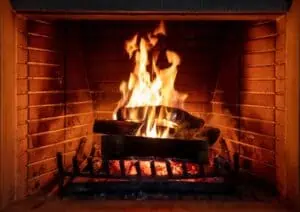How To Repaired A Gas Fireplace?
A gas fireplace can be a source of warmth and comfort. However, it is also one of the most potentially dangerous pieces of equipment in your home. Luckily, there are steps you can take to ensure yours is in tip-top shape.
(Looking for fireplace blower repair? Contact us today!)

The first step to gas fireplace repair is to ensure the unit is on. If the pilot light isn’t functioning, the burner will be unable to create a flame. Also, check for debris in the chimney and on the fireplace. These can restrict the flow of air and cause the flame to burn weakly.
Ensure the thermocouple and valve are properly in place. The thermocouple is an electrical sensor that determines when the fire is burning correctly. It is typically screwed in tightly. Similarly, the valve should be in the on position. Once the thermocouple and valve are in place, a qualified technician will perform a full inspection of the fireplace. This will include checking the thermostat to ensure it is set to the correct temperature, checking the igniter, and inspecting the thermopile, which is similar to the thermocouple but is not connected to gas.
Lastly, it’s important to test the gas supply. If the gas pressure is low, you may be able to fix the problem by running a hose down the gas line. But, if the gas is leaking, it’s best to contact your utility provider to find out what’s going on.
One of the most common reasons a gas fireplace won’t start is because of the pilot light. A worn-out pilot light will cause the gas to fail to ignite. You can either buy new parts or relight the fireplace. On average, it’ll cost around $150 to have the pilot light repaired.
In addition to the pilot light, many gas fireplaces have problems with their gas line. The gas may be leaking or there may be excessive moisture in the line. Whether you have a propane or natural gas fireplace, you should inspect the lines for leaks. Alternatively, you can have a plumber install a new line.
If you have a remote-starting fireplace, be sure to check the batteries. You can also check for any unusual noises when the unit is operating. Any abnormal noises will be a sign of a problem with the burner or blower.
A rotten egg smell is another indicator of a natural gas leak. You can also check for bubbles in the water that is mixed with dish soap. Typically, gas leaks are very rare. Using a handheld vacuum to remove dust and debris from the fireplace’s interior will help.
Finally, you should call a professional to perform gas fireplace repair. Not only is it possible for an amateur to make the problem worse, but it can be dangerous. Your family’s safety is at risk. Fortunately, an expert can diagnose your problem and help you decide whether to repair or replace your fireplace.
While a gas fireplace is one of the safest forms of heating available, you do need to remember to keep it in good working order. Proper maintenance will keep it running for years to come. Even if your fireplace has reached its peak, a regular service will prevent it from failing prematurely.

